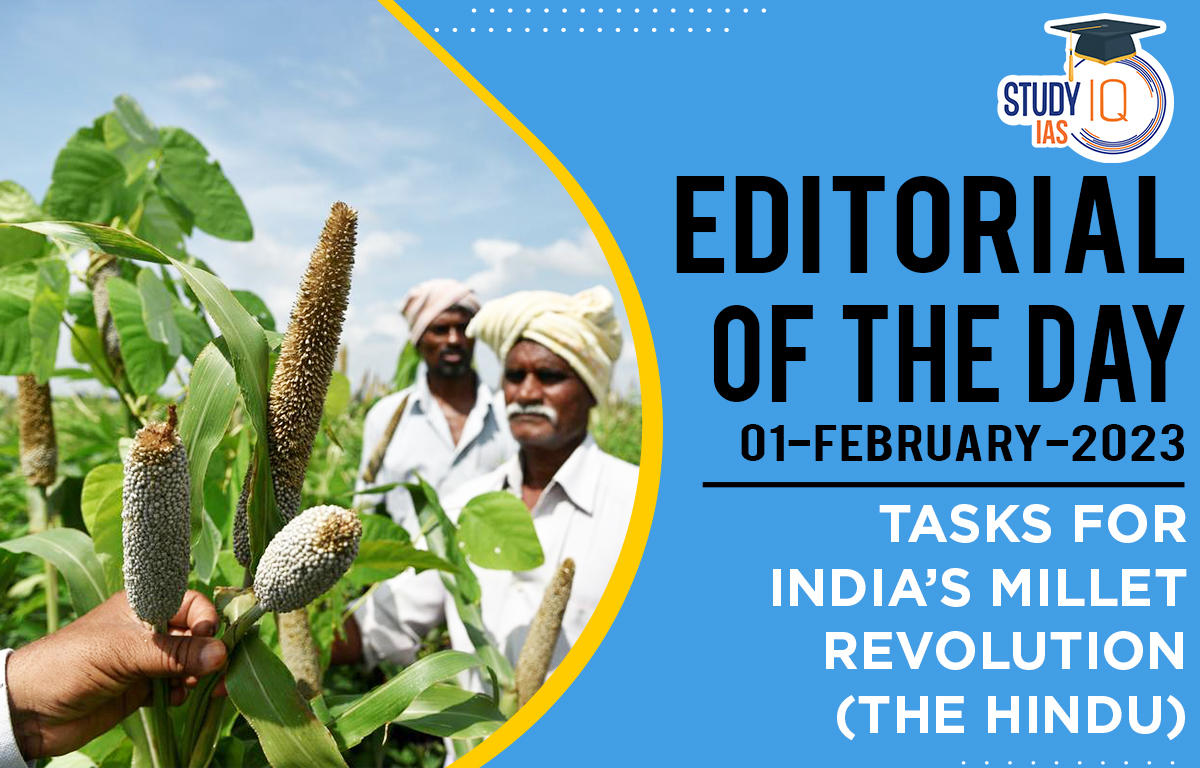Table of Contents
Context of the Article: The Food and Agriculture Organization of the United Nations (FAO) has declared 2023 as the International Year of Millets.
Author’s Views
- In this article, the author writes about the nutrient properties of millet and the constraints which hinder the increase in millet cultivation and consumption.
- Millets have special nutritive properties (they are high in protein, dietary fibre, micronutrients and antioxidants) and special agronomic characteristics (drought-resistant and suitable for semi-arid regions).
- Millets grown in India:
- Major millets: Include sorghum, pearl millet and finger millet.
- Minor millets: Minor millets include foxtail, little millet, kodo, proso, and barnyard millet.
Production and Consumption of Cereals in India
- In 2019-20, the total offtake of cereals through the Public Distribution System (PDS) and the Integrated Child Development Scheme (ICDS) and school meals was around 54 million tonnes.
- In 2019-20, the total production of nutri-cereals (earlier called coarse cereals) was 47.7 million tonnes.
- The bulk of this was maize-a non-millet crop used mainly as feed.
- The production of sorghum, pearl millet and finger millet along with other millet was 18.9 million tonnes.
- The inclusion of millets in the PDS would only be feasible if more than 50% of production were procured. Millets are procured in only a few States, and stocks in the central pool are small.
Barriers in Millet Consumption: Author’s Opinion
- Decline in the area under millet cultivation: The production of sorghum (jowar) has fallen, the production of pearl millet (bajra) has stagnated, and the production of other millets, including finger millet (ragi), has stagnated or declined.
- Low productivity of millet: The productivity of jowar and bajra has increased, but only marginally. The average yield of jowar was 957 kg per hectare in 2011-12 and 989 kg per hectare in 2019-20.
Kolli Hills Case Study
- In Kolli hills (Tamil Nadu) there was a rapid decline in minor millet cultivation. Cultivators shifted towards profitable crops such as Cassava, Pineapple, coffee and pepper due to low yields and very less marketing price.
- M.S. Swaminathan Research Foundation (MSSRF) intervened and yield enhancement was attempted, through community seed bank, customized post-harvest machinery, training of farmers and marketing of production in the form of ready to cook products.
- Small-scale localised mechanical milling, operated by self-help groups, was particularly a game-changer.
- Efforts of MSSRF leads to increase in productivity and yield of finger millets, improvements in incomes from millet farming, increase in millet consumption and establishment of private mills.
Conclusion
- Increasing the production of millets and reversing the decline in area cultivated are feasible steps but not easy, and require multiple interventions including scientific inputs, institutional mechanisms, financial incentives and in-kind support.
- The Government of India and State governments, notably Karnataka and Odisha, have initiated Millet Missions to help in boosting millet production.
- Small farmers in hilly regions and dryland plains, who are among the poorest households in rural India, are going to cultivate millets only if it gives them good returns.
- Adequate public support can make millet cultivation profitable, ensure supply for the PDS, and, ultimately, provide nutritional benefits to a wide section of the population.





















 WhatsApp
WhatsApp